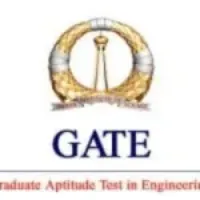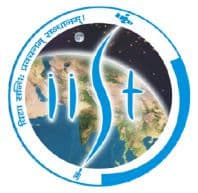Latest Applications Open 2024:
GATE 2025 Syllabus of Chemical Engineering has been Released. IIT Roorkee is responsible for announcing the syllabus of GATE 2025 for Chemical Engineering with the info booklet. The GATE 2025 Syllabus intended for Chemical Engineering will comprise the themes and chapters where the examination questions will be rooted. Contenders can examine the syllabus to formulate for the forthcoming GATE 2025 Examination.
By looking through the GATE syllabus 2025 for Chemical Engineering, the candidates will be about the topics dealt with in the exam. The syllabus of GATE 2025, meant for Chemical Engineering, will be separated into nine sections. IIT Roorkee conducts the GATE 2025 Exam.
The GATE 2025 examination will continue for 3 hours, and the contenders must answer questions correlated to General Aptitude and Chemical Engineering.
GATE 2025 Chemical Engineering Syllabus – PDF Released
GATE 2025 Chemical Engineering Syllabus has been Released. Click to Download Chemical Engineering Syllabus.Pdf
Section 1: Engineering Mathematics
Linear Algebra: Matrix algebra, Systems of linear equations, Eigenvalues, and eigenvectors.
Calculus; Functions of a single variable, Limit, continuity and differentiability, Taylor series, Mean value theorems, Evaluation of definite and improper integrals, Partial derivatives, Total derivative, Maxima and minima, Gradient, Divergence and Curl, Vector identities, Directional derivatives, Line, Surface and Volume integrals, Stokes, Gauss and Green’s theorems.
Differential equations: First-order equations (linear and nonlinear), Higher order linear differential equations with constant coefficients, Cauchy’s and Euler’s equations, Initial and boundary value problems, Laplace transforms, Solutions of one-dimensional heat and wave equations, and Laplace equation.
Complex variables: Complex number, polar form of the complex number, triangle inequality.
Probability and Statistics: Definitions of probability and sampling theorems, Conditional probability, Mean, median, mode and standard deviation, Random variables, Poisson, Normal and Binomial distributions, Linear regression analysis.
Numerical Methods: Numerical solutions of linear and non-linear algebraic equations. Integration by trapezoidal and Simpson’s rule. Single and multi-step methods for the numerical solution of differential equations.
Section 2: Process Calculations and Thermodynamics
Steady and unsteady state mass and energy balances include multiphase, multicomponent, reacting, and non-reacting systems. Use of tie components; recycle, bypass, and purge calculations; Gibb’s phase rule and degree of freedom analysis.
First and Second laws of thermodynamics. Applications of first law to close and open systems. Second Law and Entropy. Thermodynamic properties of pure substances: Equation of State and residual properties, properties of mixtures: partial molar properties, fugacity, excess properties, and activity coefficients; phase equilibria: predicting VLE of systems; chemical reaction equilibrium.
Section 3: Fluid Mechanics and Mechanical Operations
Fluid statics, Newtonian and non-Newtonian fluids, shell-balances including a differential form of Bernoulli equation and energy balance, Macroscopic friction factors, dimensional analysis, and similitude, flow through pipeline systems, flow meters, pumps and compressors, elementary boundary layer theory, flow past immersed bodies including packed and fluidized beds, Turbulent flow: fluctuating velocity, universal velocity profile and pressure drop.
Particle size and shape, particle size distribution, size reduction, and classification of solid particles; free and hindered settling; centrifuge and cyclones; thickening and classification, filtration, agitation, and mixing; conveying of solids.
Section 4: Heat Transfer
Steady and unsteady heat conduction, convection and radiation, thermal boundary layer and heat transfer coefficients, boiling, condensation, and evaporation; types of heat exchangers and evaporators and their process calculations. Design of double pipe, shell and tube heat exchangers, and single and multiple effect evaporators.
Section 5: Mass Transfer
Fick’s laws, molecular diffusion in fluids, mass transfer coefficients, film, penetration, and surface renewal theories; momentum, heat and mass transfer analogies; stagewise and continuous contacting and stage efficiencies; HTU & NTU concepts; design and operation of equipment for distillation, absorption, leaching, liquid-liquid extraction, drying, humidification, dehumidification, and adsorption.
Section 6: Chemical Reaction Engineering
Theories of reaction rates; kinetics of homogeneous reactions, interpretation of kinetic data, single and multiple reactions in ideal reactors, non-ideal reactors; residence time distribution, single parameter model; non-isothermal reactors; kinetics of heterogeneous catalytic reactions; diffusion effects in catalysis.
Section 7: Instrumentation and Process Control
Measurement of process variables; sensors, transducers and their dynamics, process modelling and linearization, transfer functions and dynamic responses of various systems, systems with an inverse response, process reaction curve, controller modes (P, PI, and PID); control valves; analysis of closed-loop systems including stability, frequency response, controller tuning, cascade and feedforward control.
Section 8: Plant Design and Economics
Principles of process economics and cost estimation including depreciation and total annualized cost, cost indices, rate of return, payback period, discounted cash flow, optimization in process design, and sizing of chemical engineering equipment such as compressors, heat exchangers, and multistage contactors.
Section 9: Chemical Technology
Inorganic chemical industries (sulfuric acid, phosphoric acid, Chlor-alkali industry), fertilizers (Ammonia, Urea, SSP and TSP); natural products industries (Pulp and Paper, Sugar, Oil, and Fats); petroleum refining and petrochemicals; polymerization industries (polyethene, polypropylene, PVC, and polyester synthetic fibres).
Other GATE Related Syllabus PDF
If you have any queries regarding the GATE 2025 Syllabus for Chemical Engineering, you can ask your query and leave comments below.

As a dedicated Biology Science graduate, I’m passionate about sharing the latest updates in national and state entrance exams through my blog. I aim to keep aspiring students informed about exam trends, important dates, and changes in syllabi. With a keen interest in education, I strive to offer valuable insights for students navigating the competitive landscape of entrance examinations and admission tests. Stay updated with me.


